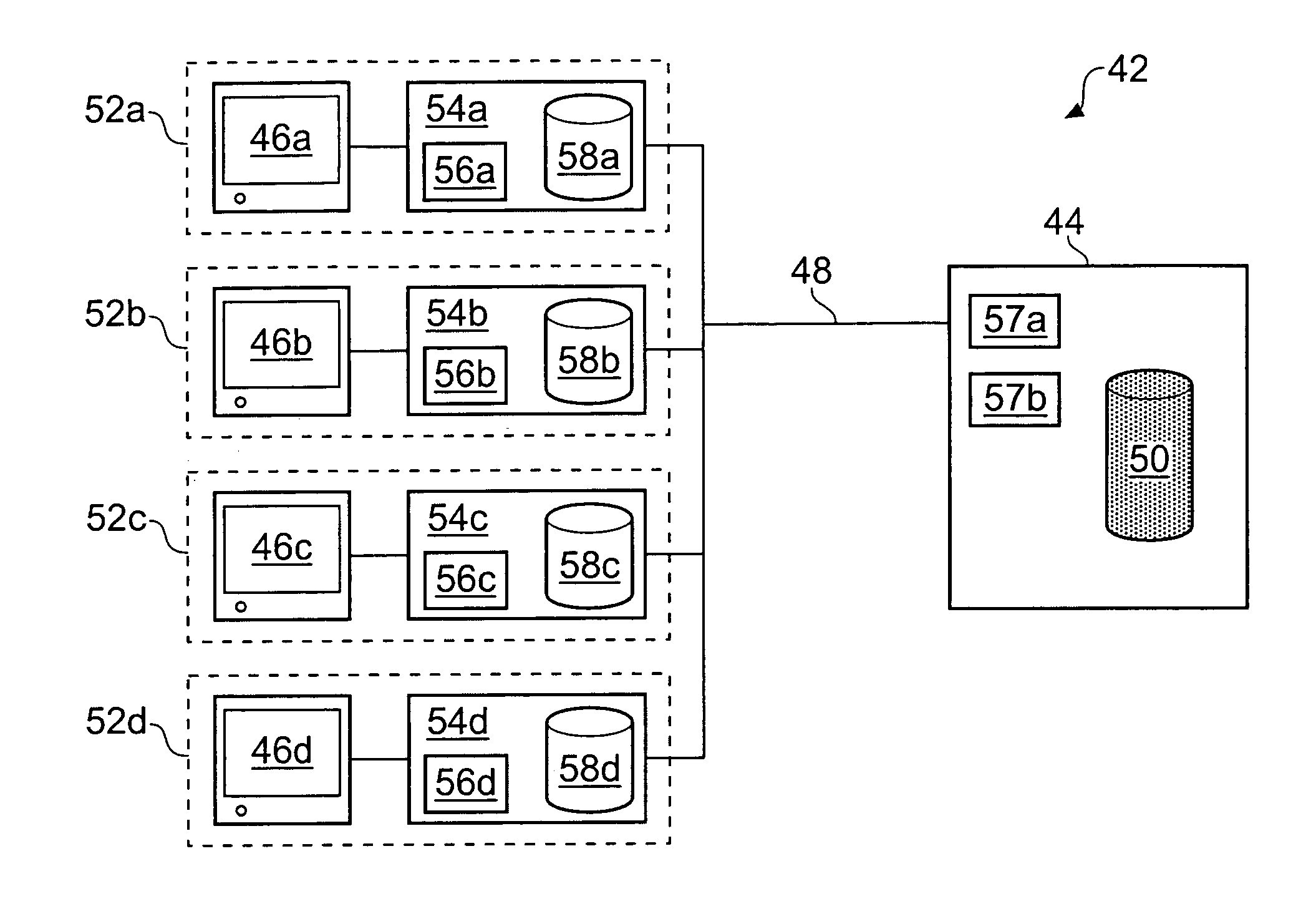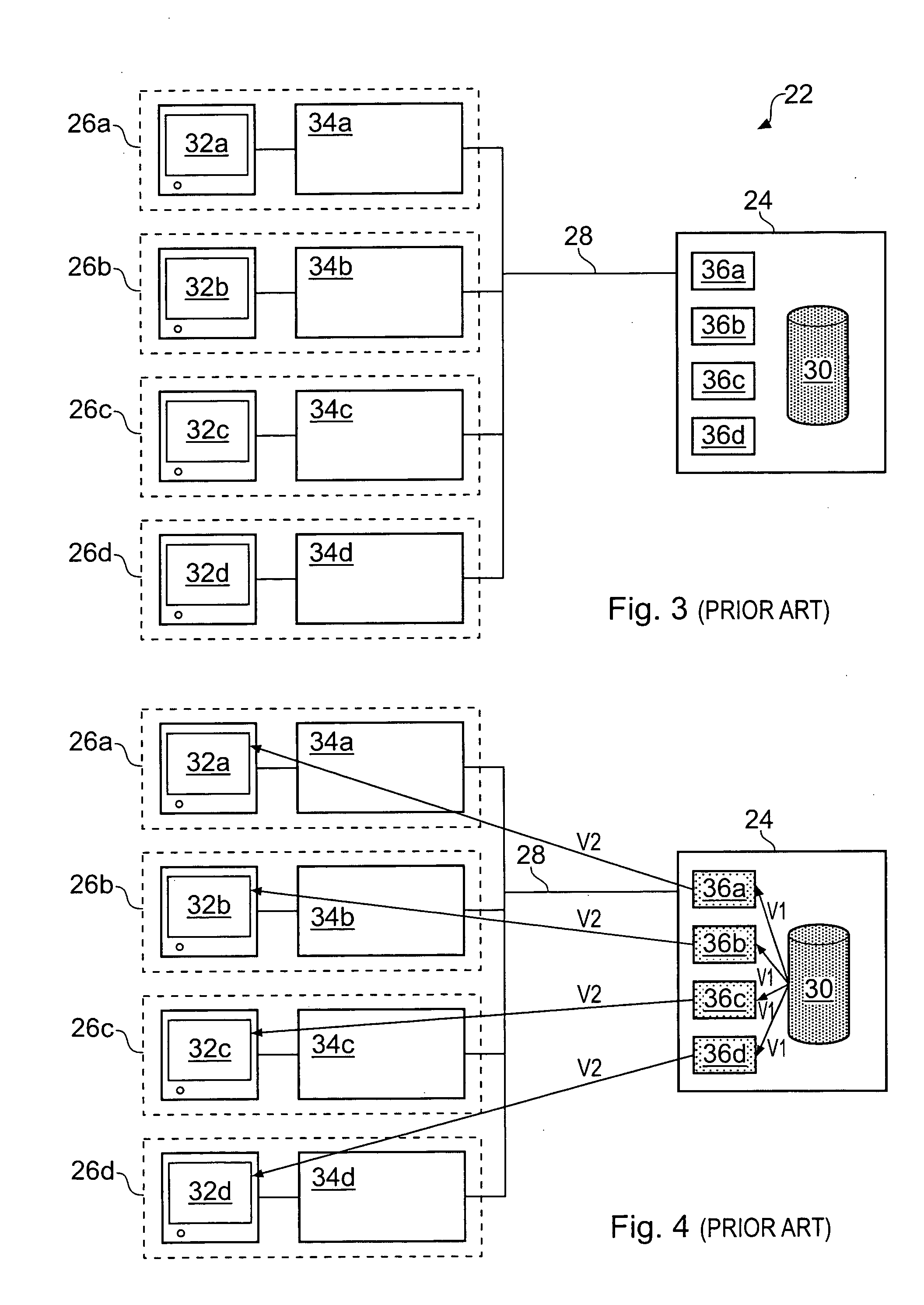Server-client architecture in medical imaging
a server-client and medical imaging technology, applied in the field of server-client architectures in medical imaging, can solve the problems of limiting the flexibility of user's workflow, relying on transferring patient data ahead of time to each client workstation, and consuming a large amount of time, so as to reduce the time before the client can start to operate autonomously, improve performance, and improve the overall transfer rate
- Summary
- Abstract
- Description
- Claims
- Application Information
AI Technical Summary
Benefits of technology
Problems solved by technology
Method used
Image
Examples
Embodiment Construction
[0049]FIG. 5 schematically shows a computer network 42 for analyzing (e.g. processing and viewing) medical image volume data according to an embodiment of the invention. The data are analyzed using a software application. A typical software application supported by the network will comprise a suite of programs which allow a user to view and manipulate patient data as required for a given clinical study. An example of this type of application is Voxar3D™ provided by Barco N.V. A common task will be to render 2D images from 3D medical imaging data. The network 42 is deployed in a hospital, or similar environment. However, it could also be a distributed network (e.g. using the internet) that is not linked to any particular physical location. The network 42 comprises a server 44 and a number of (in this case four) client computer workstations (“clients”) 52a-d. The server 44 and clients 52a-d are in data communication through a conventional LAN network interconnection 48.
[0050] The ser...
PUM
 Login to View More
Login to View More Abstract
Description
Claims
Application Information
 Login to View More
Login to View More - R&D
- Intellectual Property
- Life Sciences
- Materials
- Tech Scout
- Unparalleled Data Quality
- Higher Quality Content
- 60% Fewer Hallucinations
Browse by: Latest US Patents, China's latest patents, Technical Efficacy Thesaurus, Application Domain, Technology Topic, Popular Technical Reports.
© 2025 PatSnap. All rights reserved.Legal|Privacy policy|Modern Slavery Act Transparency Statement|Sitemap|About US| Contact US: help@patsnap.com



